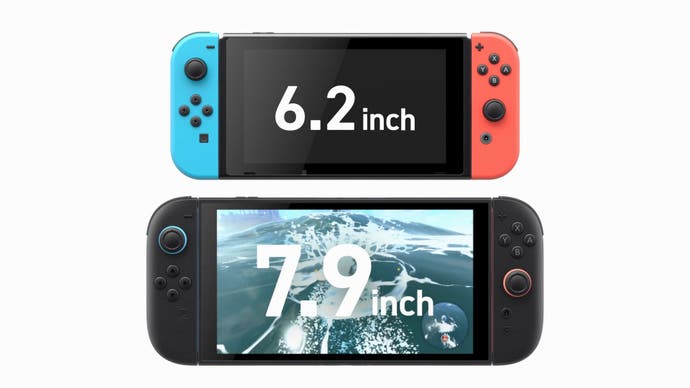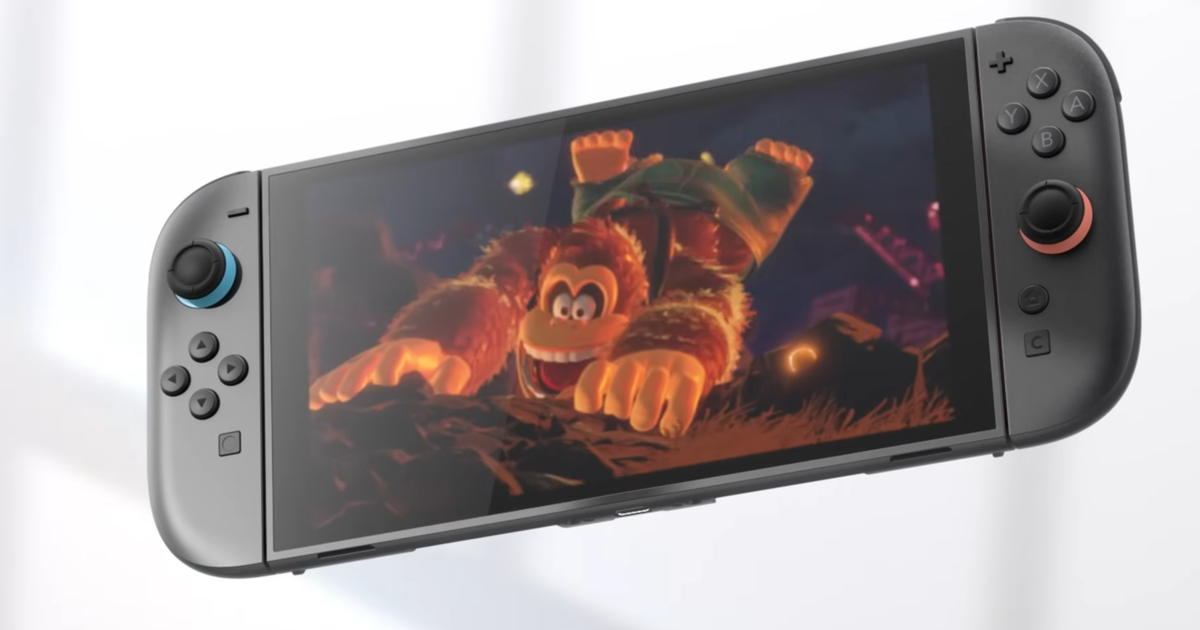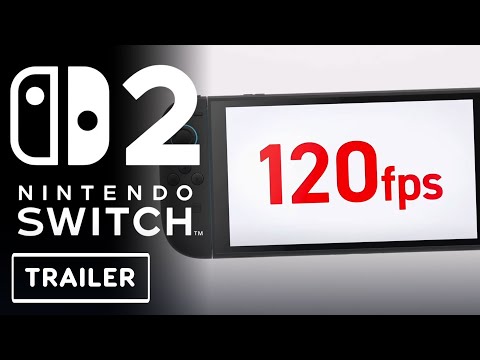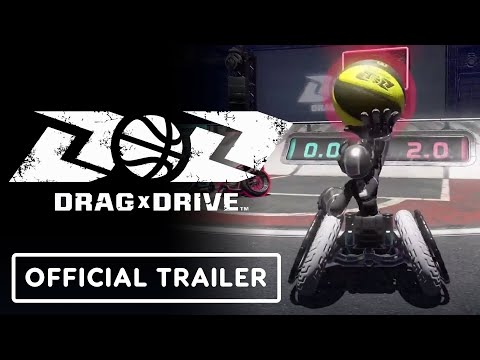While countless Switch 2 hardware leaks painted the picture of a console unusually similar to its predecessor, Nintendo spent much of this week’s official Switch 2 Direct trying to prove its next machine was more than just a simple upgrade. Sure, the console can still connect to your TV or live as a handheld, and yes, with the exception of one new button, the device’s form factor looks remarkably similar. But, Nintendo said, dig into the capabilities hidden behind that one new button, or in the Joy-Con 2’s new mouse functionality, and there was still that spark of creativity that sets the company apart.
After four hours with Switch 2, and time with all of its new first-party games, I can see it – though the console’s more experimental side is also its weaker. Of course, there is absolutely nothing wrong with creating a better version of a hugely-successful console, keeping the main Switch concept of hybrid play intact while improving the elements that needed an upgrade: the Switch 1’s aged processing power, its fussy Joy-Con attachments, its basic online social capabilities. With Switch 2 in your hands, you hold a console that can tick off a string of current-gen console standards: 4K, HDR, VRR and 120fps, at least on some titles. And while I’ll leave the pixel analysis to Digital Foundry, it is evident just from a quick play with Switch 2’s first-party software that Nintendo is now able to feed off of significantly more power under the hood.
Mario Kart World’s open landscape is a dramatic revolution for the series – a gamble that I believe pays off, and a new landmark entry that seems likely to rival the huge popularity of Mario Kart 8 Deluxe over Nintendo’s last generation. I’ve written my detailed thoughts on Mario Kart World’s brilliance elsewhere. And then there’s Donkey Kong Bananza, which ended the Switch 2 Direct in a slot many had expected to be reserved for a long-awaited new 3D Mario, but after some hands-on time actually feels just as exciting.
Across huge floating 3D areas with massive demolition potential, Bananza sees DK burrow, stomp and slap his way through enemies and rocks, tunneling beneath levels, smashing through walls, and creating projectiles out of stone slabs scooped out of the floor. At first glance, this might look to be any other 3D platformer. But dig deeper, literally, and the possibilities of this game’s destructible environments become clear. This is not just about the 3D space you can see, but the 3D world beneath DK’s hairy ape feet – the metres of rock that hide secret paths and collectibles – or the sheer cliff faces he can scamper up with ease (no Breath of the Wild stamina meter here).
Like Mario Kart World’s wide, seamless map, the Switch 2’s extra processing oomph can be seen in the amount you can smash up Bananza’s 3D levels, toss explosives with satisfyingly craterous results, and flatten areas with your fists to mine out treasure or simply carve a quick pathway to another area. Yes, everyone might have been expecting Mario, but Bananza’s brawny obliteration is far better suited to his one-time enemy, and seems technically improbable on Nintendo’s older hardware.
In terms of cross-generational games, Metroid Prime 4: Beyond seems a good example of a title that, in the past, Nintendo would have likely released looking fairly similar on both of its consoles (a la Breath of the Wild on Wii U and Switch, or Twilight Princess on GameCube and Wii). Instead, Beyond packs 120fps/1080p performance or 60fps/4K quality modes while docked – a first for any Nintendo-made game, but an acknowledgment of the expectation for that choice today.
Eight years on from Metroid Prime 4’s original announcement, it felt faintly implausible I was finally holding a demo of it in my hands. Even more so, that it managed to recreate the feel of the series’ classic trilogy – pretty, but slightly dated in (dare I say it) a retro way – enough that it felt like finally playing a long-lost installment made many years ago. As evidenced in Nintendo’s recent Switch 1 Direct, Beyond will ultimately feature fresher gameplay (psychic powers!). This Switch 2 Edition demo, however, focused on just the game’s cinematic opening sequence, and a large boss fight against a Metroid-infused Space Pirate beastie. I’d expect the quiet, solo exploration the series is known for is still awaiting discovery, as this taster of it was more about getting to grips with the game’s new controls.

It’s here that Switch 2 offers more than just added horsepower, and some of the Nintendo creativity that in the past has brought us cardboard controllers and Wii Sports’ motion controls. Switch 2’s main new addition (alongside GameChat, which was sadly unavailable for me to try) is its fresh hardware gimmick: mouse functionality. This lets you turn a Joy-Con 2 on its edge, and attach a thin, rail-like bumper that cushions the controller’s base as you shuffle it across a surface.
In Metroid Prime 4, this allows you to hold the right Joy-Con 2 as a standard PC FPS mouse, while holding the left Joy-Con 2 normally. This means you can move Samus (via the left control stick) while looking and aiming via mouse controls – which is a clear upgrade. But whether you want to engage with this control option will likely depend on your setup at home, and whether you play while sitting at a desk or on the sofa. Nintendo has said the Joy-Con pointer will work on your trouser leg, if you want to shuffle the mouse around there rather than on a hard surface. But while that may be possible, I think I’d be more likely to simply flip the Joy-Con back around to be held normally – at which point, Metroid Prime 4 cleverly detects the change, and switches to standard gamepad-style controls.
It’s in the Joy-Con 2’s required mouse functionality for Drag x Drive that I’m less convinced. A three-versus-three game of essentially wheelchair basketball, this sees you operate both left and right Joy-Con 2 controllers as dual mice, with quick and precise movement – although also some large arcing swipes required of your hands – for competitive play. What I played – and what was shown at the Switch 2 Direct – felt little more than a tech demo, and I have to admit I came away with more questions about the project than answers, as well as a pair of tired arms. Drag x Drive is due out this summer and seems to be filling the place of Arms on Switch 1, where a hardware feature gets a game to show it off, with fun but ultimately somewhat insubstantial results.
The same could also be said for Nintendo Switch 2 Welcome Tour, a game described as being designed to help players better understand the hardware they’ve just bought, but which you also need to buy separately. A mix of instruction manual, developer blog and collection of mini tech demos, this game lets you answer quizzes, test out the Joy-Con 2’s cursor controls and rumble, witness the console’s HDR and rumble features and even play a mini-game where you have to try and guess an object’s frame-rate. For this, and DragxDrive, pricing will absolutely be key. But ultimately these are much smaller bets, and I’m sure deliberately so. These are odes to Nintendo’s sometimes oddball nature, while its bigger hitters sit on safer ground.
For the majority of players who bought Switch 1 and played Mario Kart, for the millions who watched the Super Mario Bros Movie and wanted more from Donkey Kong, the new entries in each franchise look set to get Switch 2 off to a very strong start, backed by hardware that looks familiar, while still providing healthy upgrades both inside and out. A lot of my play was in docked mode, but the times I was able to play handheld I was impressed by Switch 2’s larger – though LCD – screen. It’s a significant upgrade to that of its predecessor, and far closer to the crispness of the Switch OLED than I was expecting, with the added bonuses of its larger size and HDR. And that, I’m sure, will be enough. Switch 2 does not reinvent the wheel, but does not have to – and its dalliances with cursor controls here show why doing something different always adds risk. But then the Switch form factor has always been about choice. Switch 2 is a convincing next step for Nintendo, regardless.
If you’re looking to get your hands on a Switch 2 at or close to launch, you’re likely going to need to pre-order. Amazon has set up an invite system, so you can register to be in line to order a £395.99 Switch 2 or the £429.99 Switch 2 + Mario Kart World bundle.


